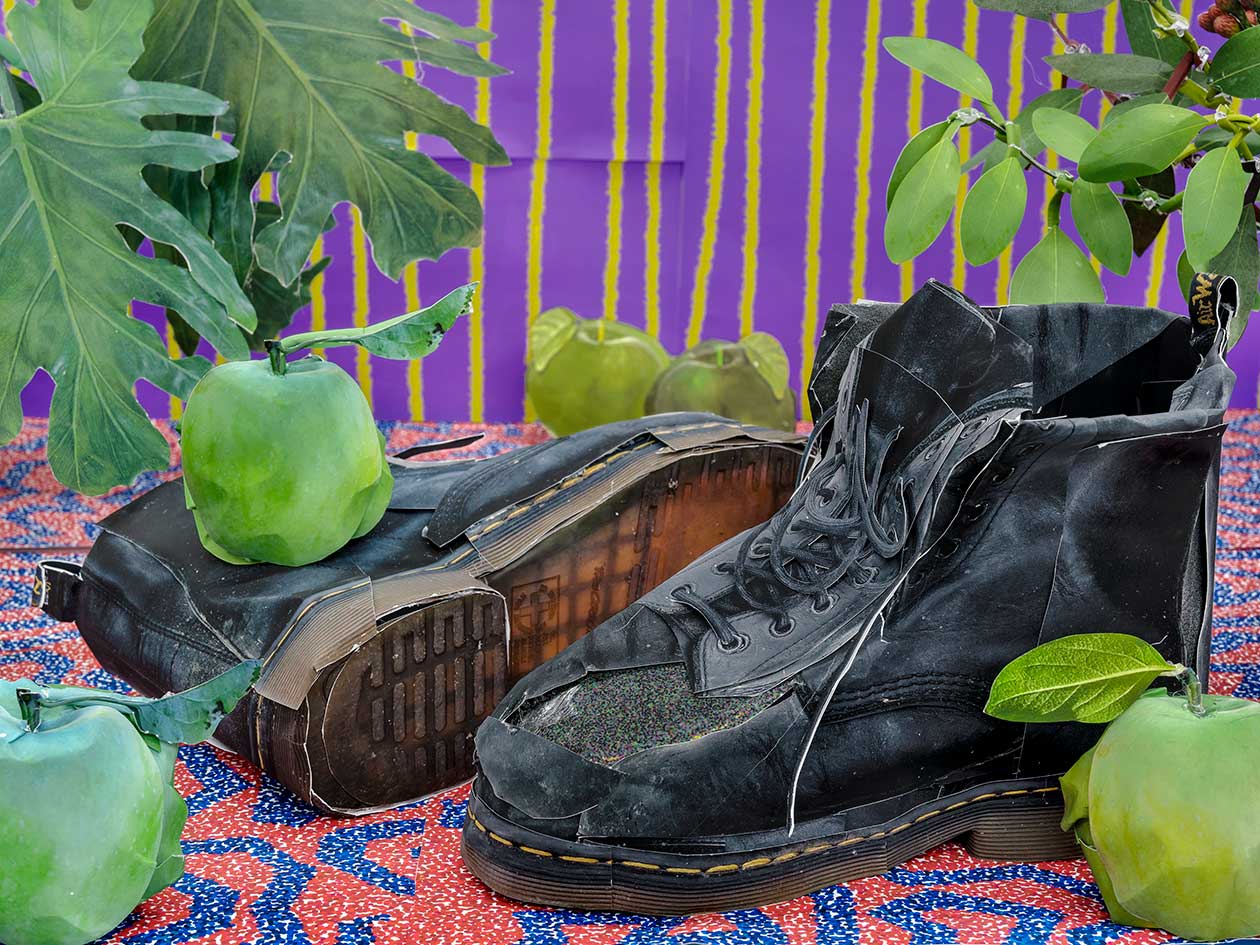The 2021 exhibition, Green Apples and Boots, includes four large-scale works, as well as fourteen smaller, intimate works that form Daniel Gordon’s latest body of work. The new photographic series, made during lockdown in New York in 2020, continues his rigorous and vibrant investigation of the still-life genre and of photography itself.
The new works included in Green Apples and Boots include quotidian objects that give a wry nod to the homogeneity of life lived in confinement in 2020. These new works combine the accoutrements of modern daily life with traditional art historical tropes of the still life genre: flowers and fruit. This combination offers a playful re-evaluation of the tableau tradition. The compositions are some of Gordon’s most complex to date, and continue Gordon’s investigation of the effects of pixilation, patterns and textures, colour, and shape as he wrestles with multiple layers of optical fields with images oscillating between flatness and depth.
Daniel Gordon’s practice operates at the intersection of physical and digital image production. He uses the genre of the still-life as a departure point for his explorations of photographic representation and the possibilities of image making. Removing images from their digital context, Gordon prints out found imagery onto paper which is then cut, folded, collaged and pasted, and used to build entirely new forms. These assemblages are then photographed. This circular journey from the digital realm to the physical one, and back again, lies at the heart of Gordon’s practice.
As much sculpture as photography, Gordon’s practice is situated at the porous boundary between the mediums, moving freely between the two dimensional and the three dimensional. With the playful physicality of his still lifes, Gordon demonstrates the easy slippage between one medium and another. The images deliberately reveal shrapnel left from the artist’s own physical labour: ripped edges, fold lines and crumpled surfaces disclose the process of making, and lay bare issues surrounding the problematic truth value in photography. We are asked to look at photography, rather than to use photography to look.
Further, Gordon’s practice sees second-hand versions of objects, not the objects themselves, recorded for posterity. Objects are translated and twisted by Gordon’s process – they morph into images, are reverted back to objecthood once more only to be flattened back into two-dimensions. The slippery, unstable nature of his works therefore point to the proliferation of imagery and photographic representation and suggests that these have become symbiotic with, rather than symbolic of, the physical world. This is heightened further by Gordon’s play with colour and form. Some objects are rendered as near-perfect facsimiles, while others are given lurid, unnatural tones, or have all sense of scale and three-dimensionality removed.
Gordon’s work, in its blurring of the line between the real and the reproduced, of appropriation and authorship, feels particularly prescient in a world where images have the ability to not only replicate indefinitely, but also to change their form and their function entirely. Gordon’s ongoing exploration of illusion, of both pictorial and material surface, reference the instability of the truthfulness of images in the post-Internet age
(By Thea Gregory)
